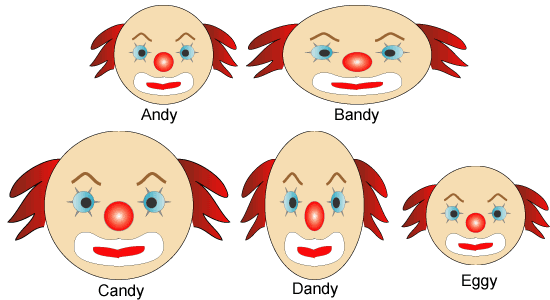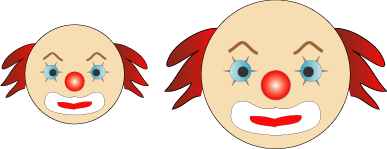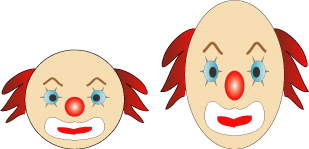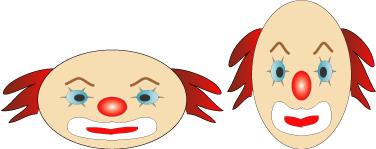Skip over navigation
Here are five clowns' faces:

The clowns are called Andy, Bandy, Candy, Dandy and Eggy. The clowns do their circus acts in pairs.
Sometimes Andy and Candy work together:

What is the same about their faces? What is different?
Sometimes Andy works with Bandy:

What is the same about their faces and what is different?
Sometimes Andy works with Dandy:

What is the same about their faces? What is different?
Sometimes Bandy and Candy work together:

What is the same about their faces and what is different?
Sometimes Bandy works with Dandy:

What is the same about their faces? What is different?
Sometimes Candy works with Dandy:

What is the same about their faces and what is different?
Sometimes Andy works with Eggy:

What is the same about their faces? What is different?

Or search by topic
Number and algebra
Geometry and measure
Probability and statistics
Working mathematically
Advanced mathematics
For younger learners
Scaling Clowns
Age 5 to 7
Challenge Level 





Here are five clowns' faces:

The clowns are called Andy, Bandy, Candy, Dandy and Eggy. The clowns do their circus acts in pairs.
Sometimes Andy and Candy work together:

What is the same about their faces? What is different?
Sometimes Andy works with Bandy:

What is the same about their faces and what is different?
Sometimes Andy works with Dandy:

What is the same about their faces? What is different?
Sometimes Bandy and Candy work together:

What is the same about their faces and what is different?
Sometimes Bandy works with Dandy:

What is the same about their faces? What is different?
Sometimes Candy works with Dandy:

What is the same about their faces and what is different?
Sometimes Andy works with Eggy:

What is the same about their faces? What is different?
You may also like
Poly Plug Pattern
Create a pattern on the small grid. How could you extend your pattern on the larger grid?

